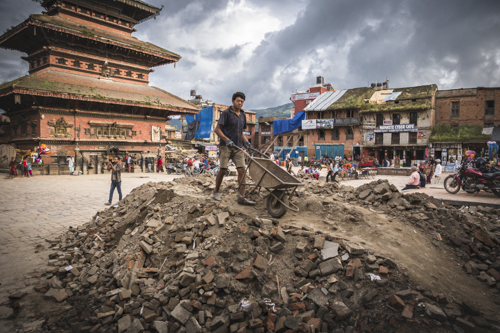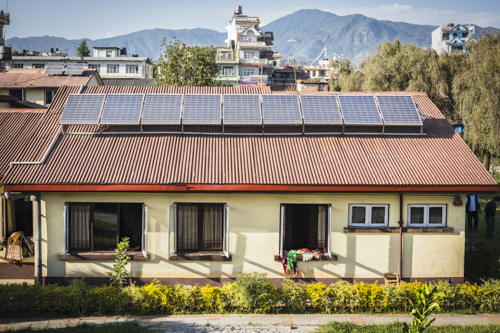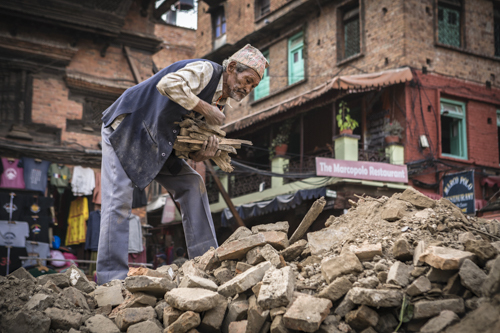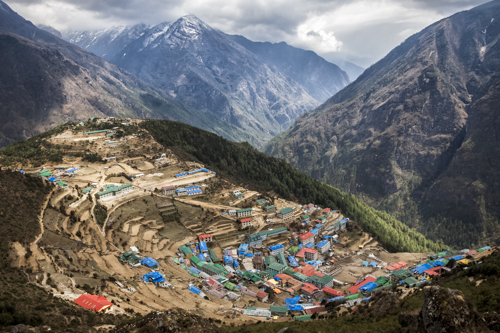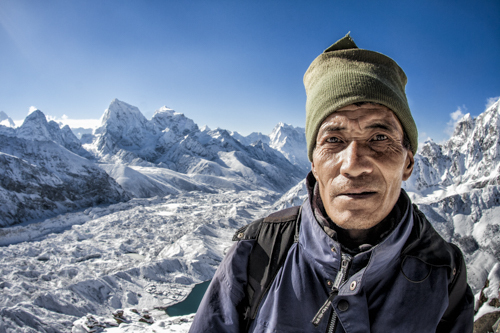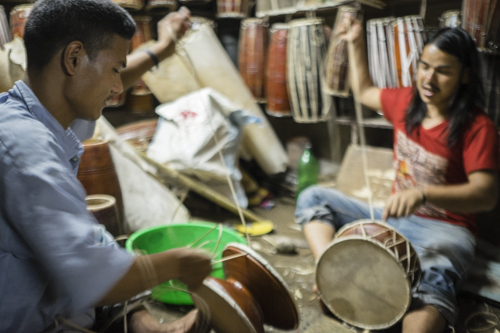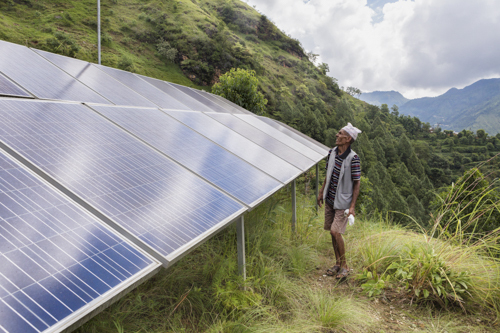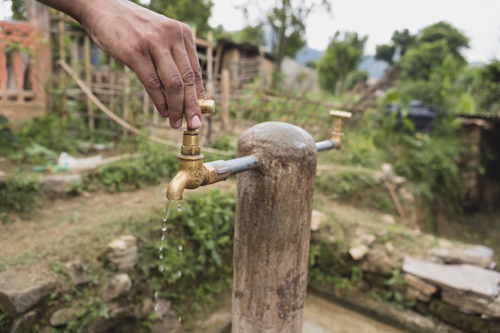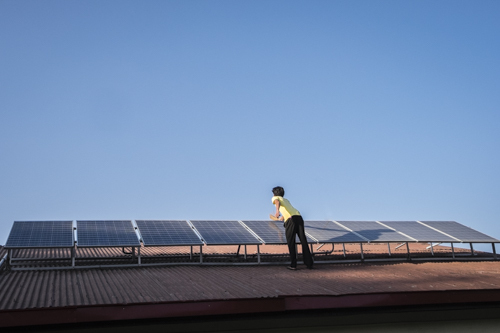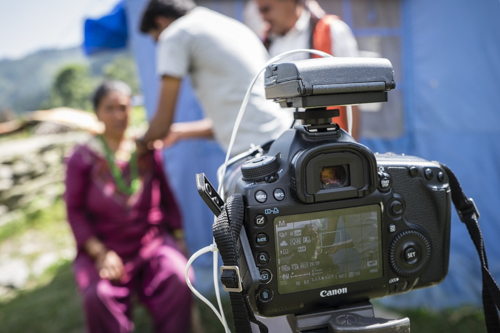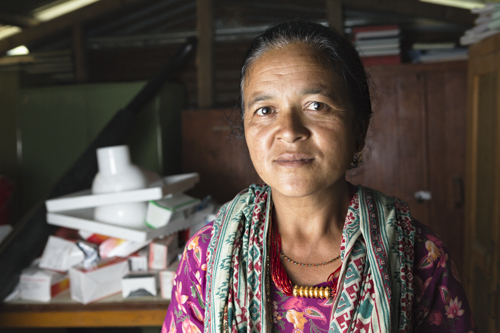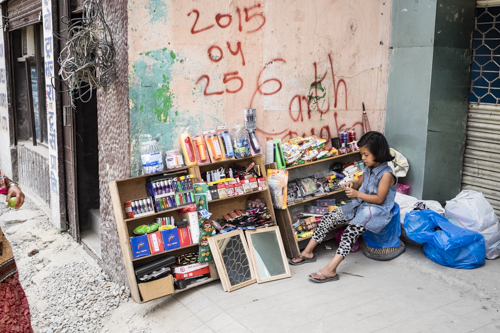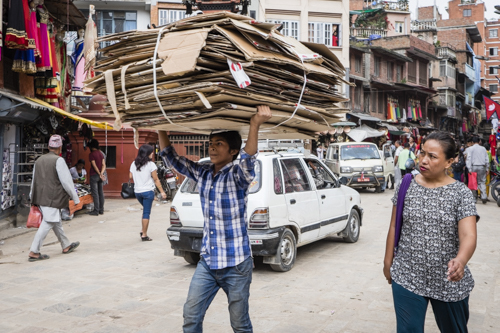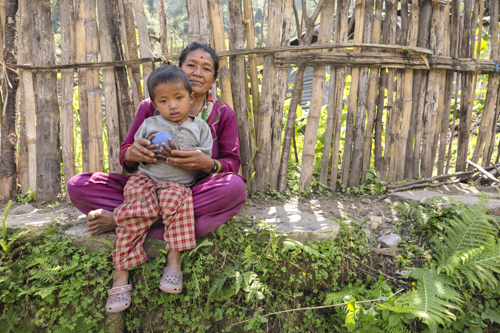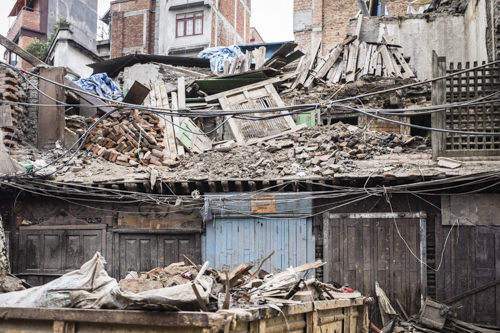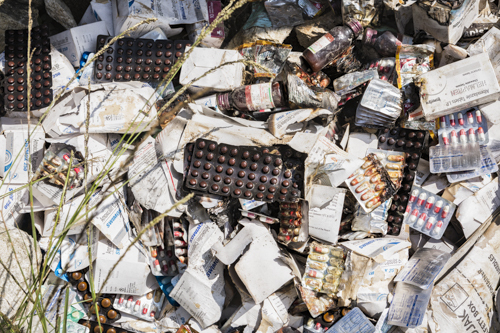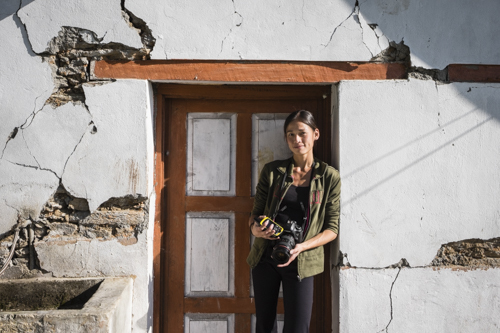
2.3 billion people worldwide lack access to reliable electricity. In Nepal roughly 80% of the population live in rural mountainous regions that have little to no access to electricity. With the devastating earthquakes last year (April 25th and May 12th 2015) the citizens of Nepal were left with a broken country, 9,000 people killed, tens of thousands of people injured and over 2.5 million homeless.
In Nepal, rooftop solar panels are being used in households to provide power for daily electrical appliances and activities; at schools to power computers, laptops and cellphones; and at hospitals and health posts to power patient needs in the rural mountainous communities. Solar integration for agricultural purposes has been implemented throughout various parts of rural Nepal to aid in the irrigation and harvest of crops year round.
My goal with my photography is to raise awareness around humanitarian and environmental issues globally. I focus on documenting the candid and capturing moments that inspire a call-to-action. Through a partnership with Photographers Without Borders and SunFarmer, a non-profit organization focused on delivering solar power to developing countries, I returned to Nepal in October 2015 to capture the impact of solar technology and build awareness around the work of SunFarmer on local Nepali communities enduring the difficulties of life without electricity due to energy poverty.
The country continues to rebuild with the citizens of Nepal struggling to survive in the midst of the current political crisis that has left the country with a limited access to petrol, medicine, cooking gas and other essential supplies.
How did you get involved with the SunFarmer project in Nepal?
The SunFarmer project came about through a partnership with Photographer's Without Borders (PWB), a non-profit collective of journalists, photographers, filmmakers and passionate storytellers with a mission to inform and inspire positive change by visually communicating the ways that grassroots initiatives are addressing problems in their communities. I was selected and assigned to document solar energy solutions for SunFarmer in Nepal.
SunFarmer is a solar engineering non-profit that installs solar energy in hospitals, health clinics, schools and agricultural sites throughout the developing world. Nearly 1.3 billion people worldwide are without access to electricity. Without electricity, a modern quality of life is impossible and the growth and prosperity of a country is severely hindered. SunFarmer has a mission to reduce this figure by providing best in class solar at an affordable rate to schools, farms and health posts. The team's goal is to provide electricity access to seven million people by 2020. In Nepal, SunFarmer has partnerships with various stakeholders that include private organizations, NGOs, government organizations, banks, bilateral organizations, and micro-finance institutions. The basic criteria when choosing to work with these organizations are like-mindedness, a vision to provide access to reliable and affordable electricity over a long period of time and access to transmission lines in areas that are difficult to reach often due to rough geographical terrain in the rural parts of the countryside.
Since SunFarmer started in Nepal in 2014, the team has successfully implemented over 100 projects in the country. The value SunFarmer works with is to provide the best in class, affordable energy solutions to their clients. Many developing countries are facing similar situations to that of Nepal with regards to energy and electricity crisis and are equally as important to focus on next. The team is still weighing out the various different countries to focus on next and has made a global announcement on their commitment to rebuilding Nepal at the Clinton Global Initiative. Their commitment will bring 1.5 MW of solar powered electricity to at least 2 countries in the next 3 years.
How do you go about determining your focus for a project of this size?
My goal for partnering with SunFarmer was to capture the impact of solar technology as Nepal continues to rebuild. The vision I had was to share a story that chronicles the lives of the Nepalese families and local community members that we visited throughout Nepal's countryside and to show their shared hardships, stories and experiences. Through a series of photo essays, I illustrate the struggles faced by the citizens of Nepal as the country continues to rebuild and how solar energy is empowering their lives.
I've lived in many of the world's major cities and remote areas of Southeast Asia and it has been an invaluable experience that has become a strong influence in the way I shoot and go about determining my focus for long-term projects. Before I pick up the camera, I enjoy seeking out new places and diving into unfamiliar scenarios where I find my way by building strong relationships with the people I end up encountering.
Over the years, my curiosity to explore has taken me to the top of the world on a month-long expedition trek across the Everest Region, to the bottom of the Red Sea free diving in Egypt and on to studying meditation and traditional Muay Thai boxing in the mountains of northern Thailand.
My project with SunFarmer took me back to Nepal for a second time. The first time I visited was in April 2012. I landed in Kathmandu on my birthday. My partner and I stayed in Thamel where we purchased our gear and equipment for an expedition trek. It was an incredible, life changing experience. We started at the famous 'world's most dangerous airport' in Lukla, acclimatized in Namche Bazaar Village, crossed the Chola Pass, summited Gokyo Ri and Island Peak and made our way to the Everest Base Camp and back to Kathmandu in one piece.
We ended up spending three months in Nepal and I had a genuine connection with the people, community and country. The Nepalese are a very special kind of people with a strong sense of dignity, compassion and unity.
What were some of the obstacles you had to overcome while planning the trip
The biggest obstacle was looking at the best time of year to visit. In Nepal, there are two preferred times a year for travel. Peak season, particularly for trekking is from late September to early December when the air is crisp and fresh with clear skies for the best mountain views. From the end of February to mid-April, it is warm and dry; the rhododendrons are in flower and bloom. This season brings a second wave of visitors. The summer months of June to August are also the monsoon season in Nepal and not an ideal time to visit. The weather is hot and wet. It rains almost everyday with occasional thunderstorms in the evenings.
Another factor to consider is the festival season. Throughout the Nepalese annual calendar, there are several religious holidays. Dashain is a very popular festival in Nepal. It is the longest and most auspicious festival celebrated. In Nepal, it is a celebration of family. People return home from all over the world to spend time with their family and loved ones. All government offices, educational institutions and businesses remain closed during the festival period that falls in September or October and lasts for fifteen days. Making a visit during the festival season can be great for street and travel photography, but is not always the ideal time to visit while on assignment. Many of SunFarmer's partner organizations remained closed during this time and we had to work around the festival schedule.
Travel and logistics are equally as important to work out long before the project starts. We had to secure well in advance a four-wheel drive vehicle and experienced driver to take us across Nepal's countryside and up the mountainside to visit the agricultural solar sites and solar water pumps that lift water from the valley below to a tank above the community on a hill. Access to water from tap stands outside each house gives families back time they would otherwise use for collecting water and gives farmers water to irrigate their crops.
How are solar photovoltaic systems used and are they anymore beneficial than the more traditional energy gathering techniques such as hydro or wind for Nepal?
A solar photovoltaic system or PV system is a power system that harnesses the power of the sun which is composed of particles of energy called photons that is converted into electricity via solar panels to power electrical loads. Simply put, solar panels absorb and convert sunlight into usable electricity.
SunFarmer Nepal team has noted that Nepal has around 720-740 MW of hydro power plants installed in the country and import around 200MW of electricity from India. There is a large demand of around 1300 - 1400 MW of energy for consumption. The supply and demand clearly doesn't match and there is a large energy deficit in the country. Nepal has not been able to upscale their hydropower installations to meet its citizen's demands because the demand for energy grows roughly 10% every year. An additional problem is that currently there is only one hydro station that has storage capacity in the country. The remaining hydro plants are run-of-river power. So during the dry season Nepal only has 25% of energy generation leaving the population with around 12-16 hours of load shedding during the dry months that runs for more than six months. This is why it is important to have a healthy energy mix of renewable energy sources in the country to address the energy crisis, to be independent and to be climate resilient. With the earthquake, most of the hydro stations were damaged. Nepal lost around 150MW of power due to the earthquake.
What were some of the obstacles you had to overcome while filming in remote locations
In Nepal, 80% of the population lack access to reliable electricity and live in the rural parts of the country. Naturally, the biggest challenge we were faced with was keeping our equipment charged and ready to shoot at all times. A few of the project sites we had on the agenda required a days worth of travel and off-road driving up Nepal's countryside.
For the project, we had arranged in advance with community directors at each of SunFarmer's partner locations to join us for the site visits. SunFarmer provided me with a translator and solar operations engineer to interview our subjects. Once on site, I setup my equipment for a series of interviews with the local community members and a series of portraits to follow.
We shot under all environmental conditions, rain or shine, indoors and outdoors. We were blessed with good weather during the tail end of the monsoon season with sunny skies and little rainfall. It became a bit of a challenge to work with the changing sunshine. While shooting outdoors and interviewing our subjects, we had to wait several times for the clouds to pass and the sun to shine to keep a consistent exposure. For portraits, we shot mostly indoors or in a shaded area outside with a three foot octabox providing warm light to envelop the sitter in their natural environment.
How does travel affect what you bring to shoot?
I try to be a minimalist when it comes to things to carry while traveling on assignment. When I travelled throughout Asia for over 2 years, I had with me my two Canon DSLR camera bodies and lenses (one for backup or video), a laptop for quick edits and social media updates, a cobra flash, a 3'' octabox, tripod, light stand, transmitter/receiver, extra camera batteries, CF cards, rechargeable AA batteries and a reflector. Today, I wouldn't go without my Voltaic Systems 17-watt solar charging kit and Fujifilm X-T1 with X Mount lenses.
Traveling has taught me to shoot creatively in difficult situations, think on my feet and problem solve various scenarios that come up. Oftentimes, you will be uncomfortable, but as long as you keep your equipment close, stay safe and keep a flexible attitude and an open mind, travel is the best kind of education that will take you to some of the most intriguing and wonderful places the world has to offer.
What advice would you give to someone interested in documentary photography
Be present, shoot in the moment and become inspired by the rich, diverse cultures of the people that inhabit the world. Everyday we are faced with environmental and societal concerns that challenge us to look inward, encourage us to re-evaluate our actions towards one another and inspire us to look closely at the world we reside in. Be true to yourself and follow your curiosity and passion.
In Nepal, the streets are so full of life with people who are proud to share their stories and life experiences if approached. Their strength of character shines through and it was important to me to capture this in the best light possible. With every photo you take, try to find a way to create images that humanize various situations and cultures. With my photography, I hope to open avenues of understanding between people and cultures and inspire positive change out of difficult situations.
Developing countries must expand access to reliable and modern energy services if they are to reduce poverty and improve the health of their citizens. Nepal is currently facing a petrol crisis on top of their electricity crisis. As a landlocked country, Nepal depends heavily on India for the import of goods into the country. Nepal is facing a shortage in fuel stock over a four-month blockade at the Indian border.
The sad reality I witnessed by working alongside SunFarmer is that the petrol crisis is worse than the April 25th 7.8 magnitude earthquake that hit the country. Nepal received a lot of support globally with regards to earthquake relief. The earthquake has caused around USD $7 billion in damages, and it is estimated that the current cumulative loss from the blockage significantly exceeds that amount.
To view the full series of photo essays from Nepal, please visit www.kristinlau.com.
To learn more about SunFarmer and what they are up to today, visit www.sunfarmer.org.
About Kristin Lau
Kristin Lau is an award-winning, Toronto-based documentary photographer from Queens, New York. She's focused on social documentary, portraiture, and underwater and aerial subjects. Kristin seeks out stories that raise awareness about the environment to evoke positive change for the natural world and its inhabitants.
Follow and connect with Kristin Lau
Twitter: @kristinannelau
Facebook: /kristinlauphotography
Instagram: @kristinannelau
LinkedIn: @kristinannelau

